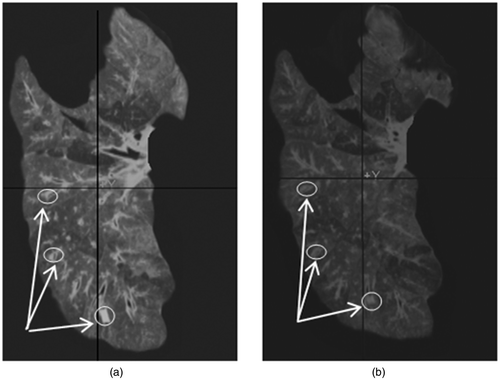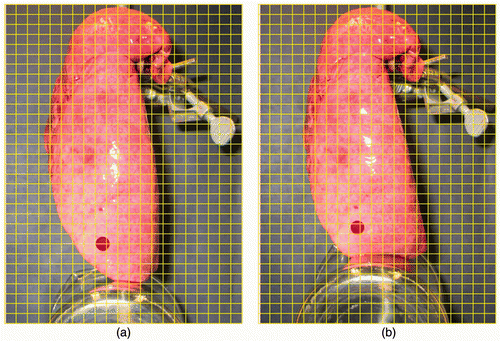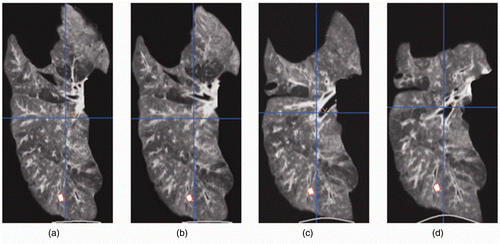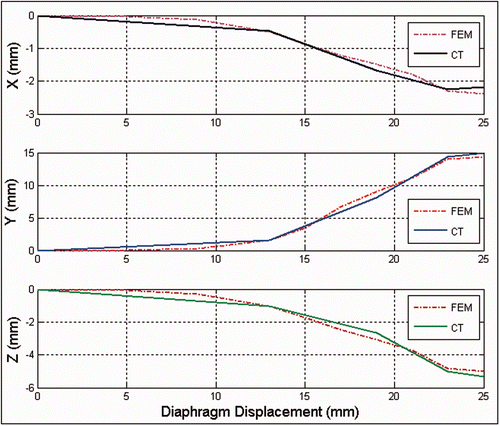Figures & data
Figure 1. Schematic diagram of the proposed image guided minimally invasive system for lung tumor ablative procedures. Pre-operative steps start with acquiring a 4D-CT respiratory sequence along with its corresponding respiration phase data. The 4D-CT sequence is used to construct a CT image of the deflated lung. In conjunction with the respiration phase data, the sequence is also used to quantify the respiratory diaphragm motion. The constructed CT image is initially used for pre-operative treatment planning. It is also used, along with the quantified diaphragm motion, for biomechanical analysis of the lung's respiratory tissue motion and deformation. The resulting tumor motion is then formulated as a function of the respiration phase data. In the intra-operative phase, respiration phase data is acquired using tracked fiducial marker data, and the tumor motion is estimated using the relationships obtained from the proposed model pre-operatively. The estimated tumor motion, along with the constructed CT image of the deflated lung and the treatment plan, can be used as input in the surgical navigation system for accurate operative guidance.

Figure 2. Result of the CT image construction. (a) Acquired CT image of the totally deflated lung for the purpose of validation. (b) Constructed CT image of the totally deflated lung. Quantitative evaluations performed on the tumor center and its boundaries, as well as on a number of anatomical features (a few of which are indicated by arrows), confirmed a sub-millimetric accuracy for the constructed CT image.

Figure 3. Ex vivo experiment conducted for model validation. The projection of the tumor area inside the lung has been tagged on the surface (a) under minimum contact and (b) after displacing the contact surface by 25 mm in the Z direction.

Figure 4. CT image sequence corresponding to the progressive loading applied to the deflated lung. The tumor slice in each image is outlined by a red circle. The same tumor slice has been tracked and shown throughout the CT image sequence.


